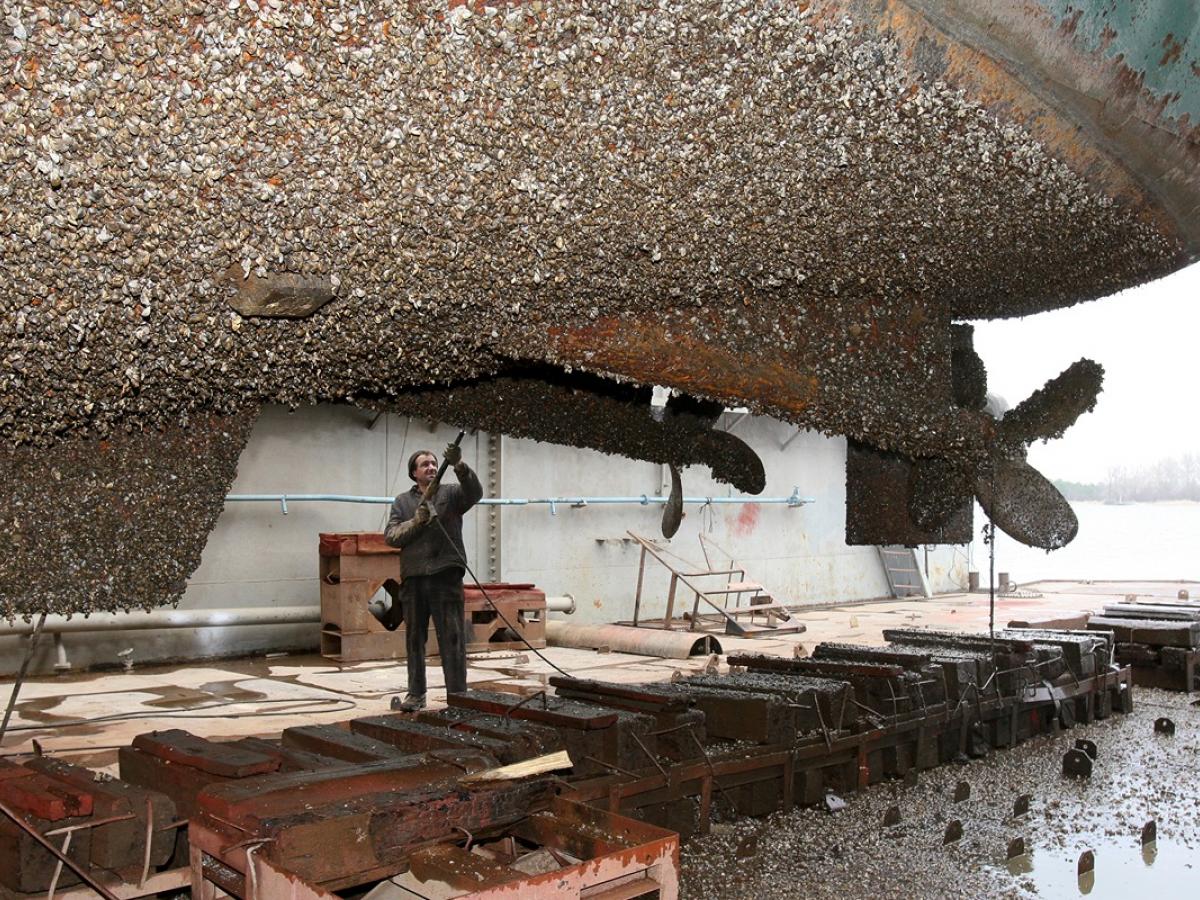A new international report, co-authored by Dr Phill Cassey from the University of Adelaide, has found that the number of alien species has been rising continuously for centuries in all regions, but are now increasing at unprecedented rates.

Shipyard worker removing vegetation and mussels. Note that invasive alien species have been introduced by many human activities (such as trade, transport or tourism) to regions and biomes around the world. Credit: A_Lesik.
The Intergovernmental Platform on Biodiversity and Ecosystem Services's (IPBES) Assessment Report on Invasive Alien Species and their Control found that more than 37,000 alien species have been introduced by a range of human activities into regions around the world, more than 3,500 of which are considered to have harmful negative impacts.
"Australia has approximately 3000 invasive alien species, which are estimated to cost the country over $20 billion every year in damages to primary industry and costs of management and control," said Dr Cassey, Australian Research Council Industry Laureate Fellow for Environmental Biosecurity at University of Adelaide and member of the University's Environment Institute.
The global economic cost of invasive alien species exceeded $423 billion annually in 2019, with costs having at least quadrupled every decade since 1970. Asia and the Pacific accounted for 25 per cent of reports of biological invasions.
"Invasive alien species are impacting all countries and regions of the world, and these impacts are continuing to increase. Globally, they are in the top five drivers of biodiversity loss, and in Australia they are the leading cause of biodiversity loss and species extinction," said Dr Cassey, who co-authored chapter four of the report, titled 'Impacts of biological invasions on nature, nature's contributions to people, and good quality of life'.
Australia has approximately 3000 invasive alien species, which are estimated to cost the country over $20 billion every year in damages to primary industry and costs of management and control.Dr Phill Cassey
From a global perspective, not all alien species are invasive. Around six per cent of alien plant species are considered invasive, as are 22 per cent of alien invertebrates, 14 per cent of alien vertebrates and 11 per cent of alien microbes.
"Invasive alien species have been a major factor in 60 per cent, and the only driver in 16 per cent of global animal and plant extinctions that we have recorded, and at least 218 invasive alien species have been responsible for more than 1,200 local extinctions," said Professor Anibal Pauchard, a co-chair of the Assessment Report.
The impacts of invasive species on human populations include diseases such as malaria, Zika and West Nile Fever, spread by invasive alien mosquito species like Aedes albopictus and Aedes aegyptii.
Invasive species also damage food supplies. The European shore crab (Carcinus maenas) has affected commercial shellfish beds in New England, USA, and the Caribbean false mussel (Mytilopsis sallei) has damaged important Indian fishery resources.
In Lake Victoria, chief reservoir of the Nile, fisheries have declined due to the depletion of tilapia, as a result of the spread of water hyacinth (Pontederia crassipes), which is the world's most widespread terrestrial invasive alien species.
Lantana (Lantana camara), a flowering shrub, and the black rat (Rattus rattus) are the second and third most widespread globally, with far-reaching impacts on people and nature.
While 80 per cent of countries have targets related to managing invasive alien species in their national biodiversity plans, only 17 per cent have national laws or regulations specifically addressing these issues. The report found 45 per cent of all countries do not invest in the management of biological invasions.
Although the spread and impact of invasive alien species are on the rise, damage can successfully be prevented and mitigated through effective management. The Assessment Report highlights for almost every context and situation, there are management tools, governance options and targeted actions that work.
"The Report provides guidance for governments to reach their biodiversity and biosecurity targets and offers essential support for safeguarding our natural resources and economies for future generations," said Dr Cassey.






